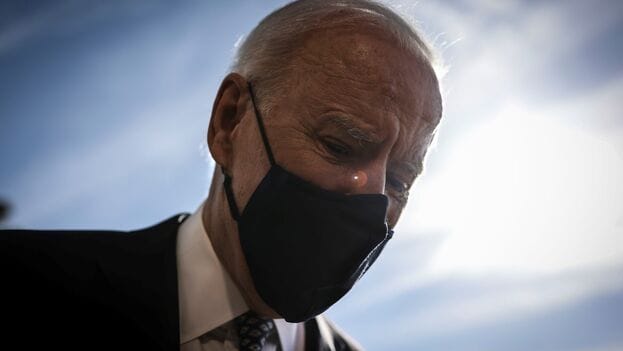
The Supreme Court rides to Biden’s rescue
President Biden’s personal hell month featured the devastation of Hurricane Ida, our country’s dreadful withdrawal from Afghanistan, mounting deaths from covid-19’s delta variant, overcrowded ICUs, a dragging economy, many schools opening and some nearly closing down, and uncontrollable fires out west.
What did I forget? The president has been bouncing all over the four Horses of the Apocalypse, a reluctant gladiator trying to rein in the ruin of his presidency when, suddenly, a double rainbow appears over the U.S. Supreme Court.
The high court’s 5-to-4 refusal to block a Texas law restricting abortion to no more than six weeks of gestation was an early Christmas gift to Biden and the Democratic Party. Thanks to cultural conservatives, pro-lifers and even former president Donald Trump, Republicans finally may have overstepped.
The court certainly ended Biden’s run of bad luck. Hell is the only way to describe what many Americans are experiencing across several states, especially in Louisiana, where power is gone, temperatures are high and moist, and mosquitoes are as hungry as the folks lined up for food. One could be forgiven for thinking the world was ending.
But leave it to the GOP to shift the focus from climate devastation and the Taliban takeover to abortion and a procedural ruling that doesn’t mean as much as has been conveyed. Not yet anyway. A much bigger fight — maybe the pivotal fight — in the abortion wars is coming up soon — Dobbs v. Jackson Women’s Health Organization. More on that in a minute.
Meanwhile, even as other Republican states plan to follow Texas, including Florida and South Dakota, the court was very clear that procedural issues wouldn’t allow it to consider the constitutionality of the Texas Heartbeat Act. The act prohibits a physician from performing an abortion “if the physician detected a fetal heartbeat for the unborn child or failed to perform a test to detect a fetal heartbeat.”
Interestingly, the Texas law doesn’t allow Texas officials to enforce the act. Instead, it authorizes private citizens to bring civil action against lawbreakers, including doctors, employees and insurers. In so doing, lawmakers rather cleverly established sovereign immunity for state officials should anyone try to sue them over the constitutionality of the law.
When various abortion providers and a private citizen sought an injunction against state officials, including the attorney general, they were essentially creating a firestorm in a mud puddle. They did manage to draw attention to the new law, however, and in doing so, forced five of the nine justices to rule (correctly, it seems to me) in such a way that women everywhere could get behind the idea of hating the court anew.
Bottom line: Because there were no real defendants, there was no live case and no dispute to reckon over. So, the Texas law went into effect.
Here, a brief sidebar is warranted. Much has changed since 1973, when Roe v. Wade became the law of the land. I was there. Back in the day, a woman had to wait at least six weeks to find out if she was pregnant, a process that had to involve a doctor or a lab. Today, in addition to an array of birth control options, women have access to inexpensive home pregnancy tests that can deliver results in seven to 10 days after ovulation — and before a missed period. Emergency contraception such as the “day-after pill” is also available for women who don’t want to wait for a home test.
Even so, and probably as a result, most Americans (59 percent) still think abortion should be legal in all or most cases, according to the Pew Research Center. Two generations of women who’ve always had reproductive choice can’t imagine living in a world that could force them to have babies they don’t want or are unprepared to raise. The 2017 cat-hat marches to demonstrate disapproval of Trump’s “grab’ em” remark will seem like marching band practice if the Supreme Court eventually finds the votes to end Roe.
Arguments will be held this fall in the earlier mentioned Dobbs case, which challenges the constitutionality of a Mississippi law banning abortions (with exceptions) after the 15th week of pregnancy. The Supreme Court decided in Planned Parenthood v. Casey in 1992 that abortions could be legally performed until fetal “viability,” or about 24 weeks. But that was, it is now easy to forget, 30 years ago.
Whatever happens, the next several weeks will most certainly be a wall-to-wall abortion freakout, giving Biden a minute or two to recover from an August that he’d probably like to forget. He is surely eager to dismount from his wild ride — and Democrats can climb out from beneath the covers.
